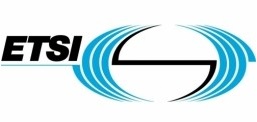TC CYBER is recognized as a major trusted centre of expertise offering market-driven cyber security standardization solutions, advice and guidance to users, manufacturers, network, infrastructure and service operators and regulators. ETSI TC CYBER works closely with stakeholders to develop standards that increase privacy and security for organizations and citizens across Europe and worldwide. We provide standards that are applicable across different domains, for the security of infrastructures, devices, services, protocols, and to create security tools and techniques.
Some of our latest standards have been in network security (implementing the NIS Directive TR 103 456, the Middlebox Security Protocol TS 103 523 series, a survey of network gateways TR 103 421), cryptography for access control and personally identifying information (Attribute-Based Encryption TS 103 458 and TS 103 532), Critical Security Controls (the TR 103 305 series), protecting PII in line with GDPR (TR 103 370), Quantum-Safe Key Exchanges (TR 103 570), and more. You can see a full list on our standards page.
In addition to TC CYBER, other ETSI groups also work on standards for cross-domain cybersecurity, the security of infrastructures, devices, services and protocols and security tools and techniques. They address the following areas and more information can be found in the related technologies pages:
- Cross-domain cybersecurity
- Information Security Indicators
- Securing technologies and systems
- Mobile/Wireless systems (3G/4G, TETRA, DECT, RRS, RFID...)
- IoT and Machine-to-Machine (M2M)
- Network Functions Virtualisation
- Intelligent Transport Systems, Maritime
- Broadcasting
- Security tools and techniques
- Lawful Interception and Retained Data
- Digital Signatures and trust service providers
- Smart cards / Secure elements
- Exchangeable CA/DRM solutions
- Security algorithms











